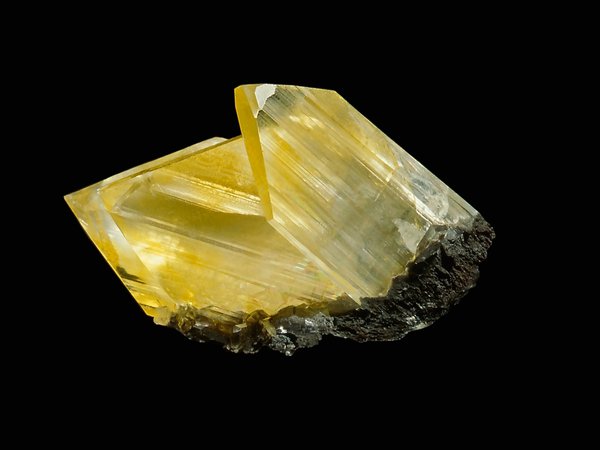Learn about minerals
Minerals are the building blocks of our planet. Discover what they reveal about the history of Earth and our solar system and what makes them so essential to our existence.


Minerals are Earth's building blocks
Everything around you is formed from chemical elements, or substances made up of only one kind of atom. There are 118 identified elements, of which 94 are natural and the rest are human-made. Most of these elements are found combined with other elements as chemical compounds.
Most are inorganic solids (apart from liquid mercury and a few organic minerals) and defined by their chemical composition and crystal structure. By weight, 99.5 per cent of minerals are formed from only 12 of the natural elements. Clearly, some elements are far more common than others. The same goes for minerals. Of the 5800 or so known minerals, only 10 make up 95 per cent of the Earth’s crust.
A mineral is a naturally occurring, normally crystalline and homogeneous solid chemical substance produced by geological processes.

Identifying minerals
With over 5800 different minerals, each mineral is classified by both its chemical composition (the elements from which it is formed) and crystal structure (the pattern the atoms form when they lock together).
Although diamond and graphite are both composed of the same element carbon, they have distinctly different crystal shapes and are categorised as different minerals.
Mineral properties
Below are some of the physical properties used to identify minerals:
- Human senses: We can identify minerals by using our senses such as sight and touch.
- Mohns hardness scale: Mohns hardness scale rates the hardness of minerals on a scale from 1 (talc) to 10 (diamond).
- Crystal structure: Minerals have a naturally formed crystal structure with a specific chemical composition.
- Lustre: Lustre is measured by the light-reflective qualities of a mineral.
- Density and specific gravity: Considered one of the most constant and quantifiable mineral properties, density refers to the relative weight of the mineral to water to determine the specific gravity (SG).
- Colour: Colour is the intensity and main body colour of a mineral. Although this is one of the most obvious characteristics, it's not always the most reliable.
- Streak: This refers to the colour of the powdered form of a mineral. A mineral that appears to be several colours will be the same in its powdered form, making it a reliable identifying property.
- Magnetism: Magnetism measures how much a mineral is attracted to a magnet.
- Tenacity: Tenacity measures a mineral's reaction to pressure.
- Cleavage and fracture: This refers to the way a mineral breaks depending on its molecular structure.
Learn more about how to classify and identify minerals.
How minerals are formed
Minerals form in a variety of different ways. Some form when salt water evaporates or when chemicals come out of hot fluids. Others are made when hot gases or molten rock cool or when heat or pressure change pre-existing minerals. Minerals start as atoms moving randomly in a fluid. When the fluid cools, the atoms link together in regular shapes and form a crystal lattice.
Humans are now competing with the natural world as mineral makers. We grow synthetic minerals in laboratories as cheaper alternatives. We also indirectly create new and rare minerals, mostly through activities related to mining.
You can discover more about mineral formations on our webpages below.
How large a mineral grows, and its final crystal shape, is determined by temperature, pressure, chemical conditions and available space.
Types of mineral formations
- Cave minerals: Water can dissolve and form other minerals in caves such as stalagmites, stalactites, columns, flowstone and helictites.
- Evaporites: Evaporites are are formed when a salty body of water evaporates leaving behind the mineral deposit.
- Sulphides and sulpho-salts: Most of the world's metal comes from sulphide deposits, formed when ore deposits and rocks containing sulphides rise to the Earth's crust.
- Gossans: Gossan's are rusty-looking rocks formed on top of sulphides, leaving behind iron oxides and silica.
- Volcanism: Volcanoes form most of the rocks and minerals that make up the Earth's crust.
- Thunder eggs: Thunder eggs are spherical objects formed in silica-rich volcanic areas.
- Zeolites: Zeolites are water-bearing alumino-silicate minerals that form during the late stages of volcanic activity.
- Hydrothermals: Heated underground water near volcanoes carries metals, gases and sulphur, creating solutions that form ore deposits and minerals.
- Metamorphism: Pressure and heat deep below the Earth's surface creates sedimentary and igneous rocks.
- Pegmatites: Pegmatites are igneous rocks with veins or pockets of extra-large crystals.
- Human-made minerals: Over 200 artificial or synthetic minerals are grown in laboratories.
Learn more about different mineral formations and how they are formed here.












